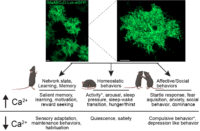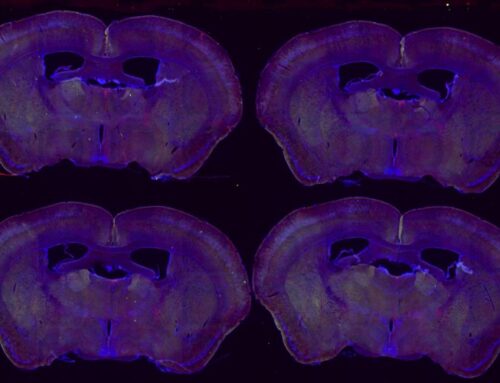Texas A&M Biologists Overview How Astroglia Influence Behavior Through Calcium Signaling
By: TAMU Biology
 New review in Frontiers in Cellular Neuroscience explores the versatile roles of astrocytic calcium
New review in Frontiers in Cellular Neuroscience explores the versatile roles of astrocytic calcium
A new review from researchers in the Department of Biology at Texas A&M University highlights an emerging frontier in neurobiology: how astrocytes—star-shaped glial cells in the brain—actively shape behavior through calcium signaling pathways.
 Published in Frontiers in Cellular Neuroscience, the review article, “Astrocyte regulation of behavioral outputs: the versatile roles of calcium,” synthesizes recent findings that position astrocytes as key regulators of memory, emotion, and physiological processes. Long considered to be passive support cells in the brain, astrocytes are now recognized for their ability to influence brain activity through dynamic, context-specific fluctuations in intracellular calcium levels.
Published in Frontiers in Cellular Neuroscience, the review article, “Astrocyte regulation of behavioral outputs: the versatile roles of calcium,” synthesizes recent findings that position astrocytes as key regulators of memory, emotion, and physiological processes. Long considered to be passive support cells in the brain, astrocytes are now recognized for their ability to influence brain activity through dynamic, context-specific fluctuations in intracellular calcium levels.
These calcium signals vary widely in timing, location, and intensity across the brain, allowing astrocytes to fine-tune neuronal function. However, this same heterogeneity has made it challenging to pinpoint exactly how astrocytic activity links to specific behavioral outcomes. The review examines how distinct types of calcium signals relate to cognitive, affective, and homeostatic behaviors, and it outlines emerging evidence suggesting that disruptions in these processes may contribute to conditions like depression, epilepsy, and neurodegenerative disease.
 Why It Matters:
Why It Matters:
This work challenges the traditional neuron-focused view of brain function by underscoring astrocytes as active participants in neural signaling and behavior. A better understanding of how astrocytic Ca²⁺ contributes to behavioral regulation could open new avenues for therapeutic interventions, especially in diseases where glial dysfunction plays a role.
The article also identifies critical unanswered questions and emphasizes the need for future research to determine how astrocytic signals causally drive behavior.





